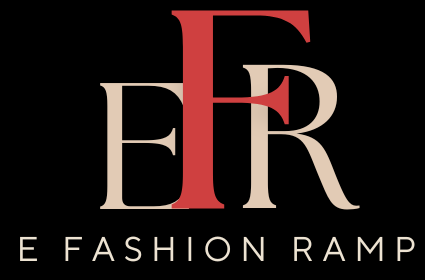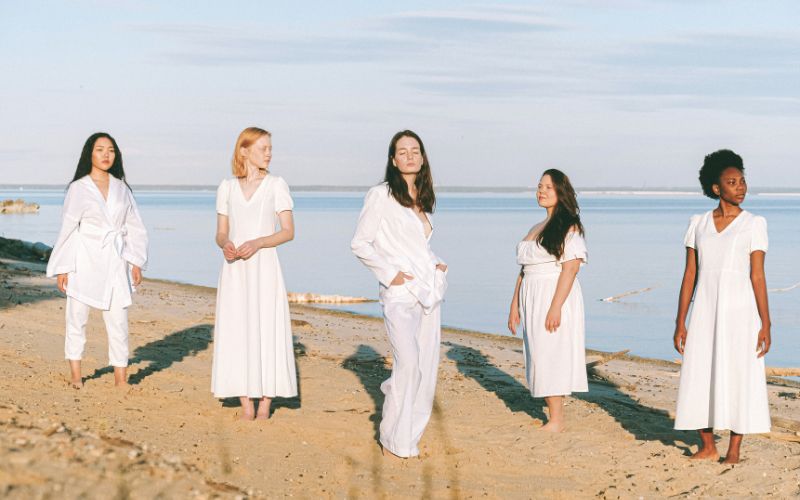Modeling is a rewarding and competitive career that involves showcasing fashion, beauty, lifestyle products and more through photographs, runway shows, and advertisements. Many of you often have a query on how to become a model.
To get into modeling, aspiring individuals can start by building a portfolio of professional photographs, attending modeling auditions, and seeking representation from reputable modeling agencies. You should also maintain a healthy lifestyle, practice good grooming habits, and develop confidence in front of the camera. Above all, networking, persistence, and a strong work ethic are crucial in pursuing a successful modeling career.
You will find today’s article useful as it has all the essential modeling tips. It will also guide on how to become a plus size model. In addition, you will get to know about how to become a male model or more precisely, modeling requirements for male.
So, without making further delay, let’s start the discussion.
Basic Requirements for Becoming a Fashion Model

Here are the basic requirements to become a fashion model:
- Height: Generally, women should be between 5’7″ to 6’0″, and men between 5’11” to 6’3″.
- Age: Typically, models fall within the range of 16 to 30 years, although age requirements can vary.
- Physique: A lean and proportionate body shape is desired.
- Skin and Hair: Clear skin and healthy hair are important attributes.
There are also costs associated with becoming a model. Here are the details about that –
- Professional Photoshoots: Expenses for high-quality portfolio pictures can range from a few hundred to a few thousand dollars.
- Portfolio Creation: Building a portfolio might require additional costs for printing, modeling books, and online portfolio hosting.
- Audition and Travel Expenses: Traveling to auditions, casting calls, and modeling markets may involve transportation, accommodation, and meal costs.
- Lifestyle Maintenance: Maintaining a healthy lifestyle with proper nutrition, fitness, and grooming can require ongoing expenses.
The costs can vary significantly depending on location, agency fees, and personal choices.
Steps to Start Your Journey as a Fashion Model

- Research in Detail About the Modeling Industry
- Explore different modeling genres & Decide what type of modeling you want to pursue
- Build a Strong Portfolio
- Get Professional Advice
- Reach Out to a Reputed Modeling Agency
- Attend Several Castings for Models
- Focus on Building a Network
- Keep Yourself Updated and Informed Regarding The Trends of the Industry
Types of Modeling and Requirements
Here are the different types of modeling and it’s requirements:
1. Fashion (Editorial) Modeling:

– Generally, height should be 5’9″ to 6’0″ for women and 5’11” to 6’2″ for men.
– Slim physique and well-proportioned body.
– Strong posing and facial expression skills.
2. Runway Modeling:

– Height should be typically 5’9″ to 6’0″ for women and 5’11” to 6’3″ for men.
– Confident walk and ability to showcase clothing with grace and poise.
– Good coordination and the ability to take direction quickly.
3. Plus-Size Modeling:

– Body positivity and confidence in representing diverse body types.
– Typically, sizes ranging from 10 to 18 for women.
– Height requirements may vary but usually around 5’8″ and above.
4. Glamour Modeling:

– Photogenic appearance with an emphasis on beauty, allure, and sensuality.
– Body proportions that align with the specific glamor model industry standards.
5. Swimsuit & Lingerie Modeling:

– Well-toned physique and confidence in wearing revealing clothing.
– Height requirements can vary, but generally, 5’7″ and above for women.
6. Body Parts Modeling:

– Specific body features, such as hands, feet, or facial features, that are aesthetically appealing.
– Well-maintained and attractive body parts that meet industry standards.
7. Fitness Modeling:

– Athletic and toned physique.
– Experience and knowledge in fitness, sports, and wellness.
– Ability to showcase products related to health and fitness.
8. Commercial Modeling:

– Versatility to represent various products and services.
– A relatable and friendly appearance with a wide range of age and body types.
9. Promotional Modeling:

– Outgoing personality and excellent communication skills.
– Ability to engage with the audience and promote products or services at events and trade shows.
10. Stock Photography Modeling:

– Versatile look suitable for a wide range of stock photography needs.
– Expressive facial features and the ability to portray various emotions and concepts.
It’s important to note that specific requirements and industry standards can vary, and individual agencies or clients may have their own preferences for each type of modeling.
How Can You Make Your Modeling Portfolio
To create a modeling portfolio, follow these steps:
- Hire a reputable photographer experienced in fashion or modeling photography.
- Include a range of images showcasing different styles, outfits, and poses.
- Include clear, close-up shots highlighting your facial features.
- Display your body proportions and posing abilities.
- Ensure that the photos are well-lit, properly edited, and showcase your best features.
- Create an online portfolio or website to showcase your images and provide contact information.
- Continuously add new and diverse photos to reflect your growth and versatility as a model.
How to Become a Model with No Money
Here are the steps to become a fashion model with no money:
Step 1: Utilize friends or amateur photographers for free photoshoots to create a basic portfolio.
Step 2: Look for modeling agencies or casting calls that accept aspiring models without requiring upfront fees.
Step 3: Connect with industry professionals, photographers, and stylists who may offer collaboration opportunities.
Step 4: Create a strong online presence on platforms like Instagram to showcase your talent and attract attention from potential clients or agencies.
Step 5: Do modeling for local fashion shows, student projects, or test shoots to gain experience and exposure.
Are There Any Terms & Conditions to Be Aware of As a Model?

As a model, be aware of the following terms and conditions:
1. Model Release: A legal document granting permission for the use of your image in photographs or videos.
2. Non-Disclosure Agreement (NDA): A contract that ensures confidentiality regarding sensitive information shared during modeling assignments.
3. Exclusivity Agreement: A contract that restricts a model from working with competing brands or agencies for a specified period.
4. Usage Rights: Specifies how, where, and for how long your images or videos can be used.
5. Payment Terms: Outlines the agreed-upon payment amount, schedule, and any additional expenses.
6. Cancellation Policy: States the conditions under which a shoot or event may be canceled, including compensation or rescheduling terms.
7. Travel and Accommodation: Covers arrangements, expenses, and responsibilities related to travel and accommodation during assignments.
8. Agency Commission: Defines the percentage or fee that the modeling agency will deduct from your earnings.
9. Image Retouching: Outlines guidelines and approvals for retouching or altering your images.
10. Liability Waiver: Releases the photographer, agency, or client from any legal responsibility in case of injury or damage during a shoot or event.
Review and understand these terms and conditions before signing any contracts or agreements in the modeling industry.
Bonus Tips
Here are some bonus tips for aspiring models:
- Believe in yourself and embrace your unique qualities.
- Maintain a positive attitude, punctuality, and professionalism in all interactions.
- Prioritize your physical and mental well-being to maintain a long and successful career.
- Stay updated on industry trends, poses, and techniques to improve your skills.
- Surround yourself with reliable and supportive individuals who can guide and mentor you in your modeling journey.
Wrapping Up,
Becoming a model requires dedication, perseverance, and a strong work ethic. By building a professional portfolio, attending auditions, and seeking representation, you can enter the world of modeling.
Meet the specific requirements of different modeling types, while also prioritizing self-care and professionalism. With the right mindset and continuous learning, you can pursue a fulfilling and successful career in the modeling industry.
FAQs About Becoming A Fashion Model
A freelance model is an independent model who manages their own bookings and contracts. Benefits include more control over their career, flexibility in choosing projects, potential for higher earnings, and the ability to work with a variety of clients and brands.
To find a modeling agent, research reputable agencies, attend open calls or auditions, and submit your portfolio and comp card to agencies that represent your desired type of modeling. Networking, seeking recommendations, and utilizing online platforms can also help in connecting with agents.
Model earnings vary widely based on factors like experience, type of modeling, location, and client. Established models can earn substantial amounts, while new or freelance models may earn lower fees.
Finding freelance modeling work involves self-promotion. Create a strong online presence, build a professional portfolio, network with photographers, stylists, and other industry professionals. Utilize social media platforms, online modeling websites, attend casting calls, and collaborate with local businesses or designers to find freelance opportunities.
Modeling industry measurements can vary, but generally, for fashion or runway modeling, height requirements range from 5’7″ to 6’0″ for women and 5’11” to 6’3″ for men. Body proportions, fitness, and overall appearance also play a significant role, but specific measurements can vary depending on the type of modeling (e.g., plus-size, fitness, or commercial).









